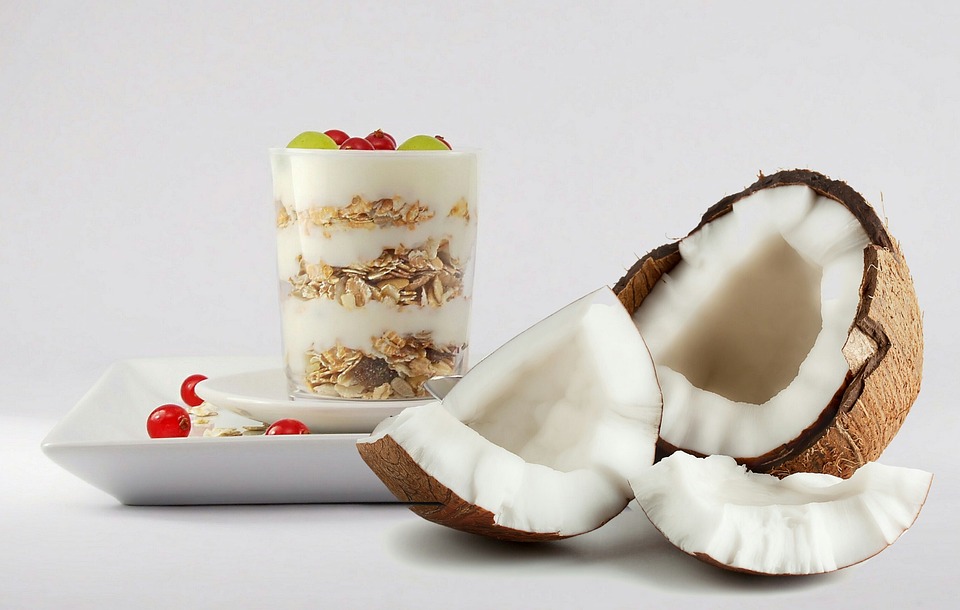
Proper nourishment throughout infancy and the early years of childhood is essential for kids to be able to grow, stay healthy, and reach their maximum potential. It is universally accepted that breastfeeding is advantageous to both the mom and baby, as it is known to be the most nutritious source of food for an infant. The family, the health care system, and the employer all receive both economic and social advantages.
The World Health Organization (WHO) suggests that infants should consume only breast milk for the first half-year, after which they should keep nursing combined with accompaniments until two years of age or longer. Exclusive breastfeeding means infants are fed purely by breast milk without any other substances, including water, tea, herbal mixtures, or solid foods, apart from vitamin supplements, minerals, or medications within the first half a year of life. Nursing an infant completely during their first 6 months leads to numerous advantages, such as a decreased likelihood of intestinal infection, pneumonia, middle ear infection, and urinary tract infection in the baby. Furthermore, mothers regain their pre-pregnancy figure more quickly and are more unlikely to contract Type 2 diabetes.
Studies have indicated that numerous mothers struggle to achieve their own goals, and to stick to the advised guidelines for long-term and sole breastfeeding, despite a greater rate of starting this practice. Certain difficulties related to breastfeeding, like soreness of the nipples or the mother’s fear of not producing enough milk, in addition to certain social obstructions like employment, short periods of maternity leave, inadequate breastfeeding knowledge, lack of social and familial encouragement, and the absence of counsel and support from healthcare personnel can have an effect on the exclusiveness and length of breastfeeding.
A further motivation for mothers to stop breastfeeding earlier than intended is the advertisement of baby formula which promotes the use of soothers and bottle feeding. Many mothers decide to use alternative forms of nourishment instead of breastfeeding because they must go back to work and others say that they do not make enough milk. So far, there are a lot of different kinds of baby formula available to purchase, every one designed to provide the correct nutrition for babies of all dietary types. Despite their convenience, infant formulas may be associated with certain issues, such as not providing enough nutrition for the baby, or providing too much. It has been reported that certain babies who were given formula milk occasionally suffered from deficiencies in certain water-soluble vitamins. A different issue connected with bottle feeding is that there is a heightened danger of exposing the young one to harmful microorganisms because of inadequate sanitation during the management and setting up of baby formula.
Conversely, when the nourishment supplied by breastfeeding or baby formula can no longer keep up with the energy and nutritional needs of the infant to ensure they take pleasure in regular growth and optimal health and well-being, it’s time to start introducing solid food. This process is known as complementary feeding. The World Health Organization suggests that solids should be given to babies at approximately 6 months of age because the digestive system, urinary system, and psychological processes are still developing at this time. In spite of this, worries still remain over when to start feeding babies complementary foods, as the data shows that waiting too long may have negative repercussions. In addition, moms use distinct strategies for weaning that can include child-led/natural, mother-led, gradual, partial, or sudden styles. It is important to be aware that when transitioning a baby off breastmilk, it is not uncommon for mothers to run into difficulties, including refusing to eat, colic and vomiting, as well as other issues. The difficulties that mothers face throughout the process of feeding their children can have a major impact on how the kids are fed.
BREASTFEEDING PRACTICES
Factors that influence a child’s growth range from genetically-inherited traits to the type of lifestyle the child has, their socio-economic status, exposure to illnesses, nutrition, and the level of medical attention available. Nutrition is the most significant aspect that can affect a child’s future progress, either directly or indirectly. For example, those kids suffer from malnutrition and live are going to be in poor overall health and their growth will be inhibited in the long term. There is increasingly more worry about the issue of overweight and obesity among kids. It is essential that an infant receives adequate nutrition and care during its early stages of life to ensure its optimal health and welfare. Nursing is the most valuable present a baby can receive in the early stages of life.
Nursing is an unparalleled technique of furnishing optimal nourishment for a baby’s thriving and progression; it is also an integral element of the reproductive process that has tremendous effects on the mother’s health.
Saha et al. reported that the current recommendations of WHO and UNICEF on breastfeeding are as follows:
- Initiation of breastfeeding within the first hour after the birth.
- Exclusive breastfeeding for the first six months.
- Continued breastfeeding for two years or more and proper introduction of solid foods starting in the sixth month which are nutritionally safe and adequate.
EXCLUSIVE BREASTFEEDING
Only breast milk should be given to an infant as their source of nutrition, according to guidelines set out by the World Health Organization (WHO) and United Nations Children’s Fund (UNICEF). This includes the mother’s milk directly, or milk provided by a wet nurse or expressed by a breast pump. The World Health Organization and UNICEF both suggest that moms nurse their child without any other form of nourishment for the initial 6 months and keep on expressing milk up to 2 years or beyond, instead of ceasing the exclusivity of breastfeeding during the 4-6 month mark.
Even though there are plenty of advantages to nursing an infant completely for the first 6 months, a lot of research is done around the conundrum of weaning in countries where development is weak, where it is required to decide between the positive outcomes of exclusive breastfeeding to guard against illnesses and the (theoretical) lack of milk to provide the necessary energy and micronutrients to the infant beyond 4 months of age. The author asserted that there is lack of information outlining the portion of only breastfed babies that are prone to particular nutritional deficiencies.
EXPRESSED BREAST MILK
Nursing an infant from the breast offers advantages to both the baby and the mother. Despite certain difficulties, a mother’s inability to breastfeed means that expressing milk is their only way to provide their baby with human milk. Expressing breastmilk involves extracting it from the breast without the baby having to suckle – you can either do this manually or with a hand or electric pump.
COMPONENTS OF BREASTMILK
Nursing an infant with breast milk provides sufficient nourishment and also guards the baby from illness. Additionally, nursing milk contains a substantial amount of cholesterol which aids in the development of the brain. It is useful to be aware of the distinct kinds and ingredients of breastmilk, as well as the vitamins they furnish to let a baby to develop and develop healthfully. Colostrum is the initial form of milk that a newborn baby receives, before regular lactation begins and which remains after the baby arrives for a few days. The consistency of colostrum is thicker than that of breast milk, and it has a yellowish or creamy hue. This liquid provides babies with the essential proteins they require in the early days of life. Colostrum, although not plentiful, is filled with highly concentrated nourishment for new babies. This particular milk contains a high concentration of fat-soluble vitamins, minerals, and antibodies that the mother transmits to the infant. Immunoglobulins supply babies with an immediate protection from bacteria and viruses, aiding in their development of immunity.
The colostrum that is present at birth will be replaced by transitional milk within two to four days. Transitional milk is a rich, creamy liquid which persists for about two weeks and contains high-fat, lactose, and water-soluble vitamins. It also contains more calories than colostrum. Once a new mum’s breasts begin to release transition milk, they will typically observe an alteration in the quantity and consistency of the liquid produced, as well as an enlargement in the size and heaviness of their breasts.
The last type of milk that a mother will produce is mature milk. In the majority of females, it starts to produce at the conclusion of the two weeks following childbirth. Two types of mature milk appear during feeding. At the start, the milk consists of water, vitamins, and protein, which is known as foremilk. Milk that follows the initial release of milk contains higher levels of fat which is necessary for gaining weight. These two types of milk guarantee that a baby will get the necessary nourishment for proper growth and development.
Roughly nine out of ten parts of mature milk is made up of water, which helps babies stay hydrated. The other 10 percent of the body is comprised of carbohydrates, proteins, and fats, which are essential for providing energy and aiding in growth. Breast milk consists mainly of lactose, the same carbohydrate found in cow’s milk. Breast milk has essential fatty acids, like DHA and ARA, in it. The quantity of whey in breast milk is higher than the amount of casein, unlike the composition of cow’s milk. Casein is tougher for babies to process than whey. Breast milk includes all of the essential amino acids required to make a complete protein. The synthesis of total protein involves adding lactoferrin, a compound that collects iron, thereby aiding in the uptake of iron into a baby’s bloodstream.
THE MOTHER’S DIET
The eating habits of a mother can have a major effect on the volume and superiority of her milk supply. Moms who have recently given birth need to modify their consumption of calories and liquids to be able to nurse their babies. Almost all vitamins and minerals that people need become higher while breastfeeding compared to the amount they required while they were pregnant. A woman breastfeeding should consume an extra 330 calories during the first half of lactation and an additional 400 calories during the second six months. The fuel required to facilitate nursing was taken in from increased food intake and stored in fat. For illustration, a nursing mother will expend 500 calories daily during the opening half year of her infant’s birth, with 330 calories from a stronger diet and 170 calories arising from the mother’s fat storage. This could explain why nursing may lead to weight loss in new moms. The IOM recommends that nursing mothers consume 3.1 liters (or about 13 cups) of fluid each day to sustain the production of milk.
Moms who are breastfeeding their baby should abstain from using illegal drugs or tobacco products while pregnant. It’s wise to speak with a healthcare provider about any legal drugs or herbal products that could potentially have damaging effects. Certain maternal dietary habits, such as consumption of spicy foods, may have to be curtailed in order to prevent the production of gas in infants who are more sensitive to it. Women who are nursing can consume alcohol, but they should refrain from nursing their baby until all traces of the alcohol have left their milk. Generally, it takes between two and three hours to process the amount of alcoholic beverages in 12 ounces of beer, 5 ounces of wine, or 1.5 ounces of liquor, based on a female individual’s bodily mass. Care must be taken to ensure that infants are not exposed to alcohol as it can mess up their sleep routine.
BARRIERS TO BREASTFEEDING
Nursing mothers may be confronted with some difficulties when they begin and carry on breastfeeding their newborns. These hindrances consist of soreness or swelling in the busts, aching or sensitive nipples, perplexity or lack of assurance in public, and having the means to nurse or extract milk at work.
Nursing mothers must initially grasp the technique of nursing. Incorrectly securely fastening something can lead to inadequate nourishment, which can impede on growth and maturation. It may take a new mom a bit of time to assist her infant in properly attaching to her breasts. Nevertheless, new mothers can be offered assistance with mastering the correct approach by International Board Certified Lactation Consultants (IBCLCs), OB nurses, and registered dietitians who have received specialized instruction. Education, longer periods of parental leave and legislation designed to safeguard public breastfeeding are all beneficial means to promote breastfeeding among mothers and their babies.
CONTRAINDICATIONS TO BREASTFEEDING
Despite the multiple advantages of breastfeeding, there are some dangers that need to be taken into account in some situations. In the developed world, mothers with HIV should not breastfeed their babies because the virus can be transferred through the milk. In most cases, these women have the ability to use a secure, prepackaged formula as an alternative to breast milk. Nevertheless, in poorer countries where HIV is widespread and finding acceptable infant formula can be difficult. A lot of infants would lack the nourishment that is necessary for them to evolve and thrive. Incorrectly prepared or contaminated baby formula results in the death of 1.5 million infants every year. The World Health Organization proposes that mothers with HIV in poorer countries feed their babies and take antiretroviral drugs in order to reduce the danger of passing on the virus.
Women who are receiving radiation or chemotherapy treatments for cancer should not breastfeed. If it is discovered that a baby suffers from galactosemia, which is an inability to process galactose, the infant must stop drinking breast milk and begin an eating plan that doesn’t include galactose. Although uncommon, this hereditary affliction only happens to approximately 1 out of every thirty thousand to sixty thousand infants at birth. If breastfeeding is not suitable for any reason, the use of formula can help caretakers fulfill the dietary requirements of their newborn baby.
INTRODUCING SOLID FOODS
The World Health Organization recommends that babies receive only breastmilk or formula for their first six months of life. The American Academy of Pediatrics suggests that for the initial four to six months of a baby’s life, he or she should be exclusively fed breast milk or bottle-formula and should not be introduced to solid foods since these do not provide the correct set of nutrients that babies require. Eating solid foods might result in a decrease in the amount of breastmilk or formula that is consumed. If it happens, a baby could fail to get the necessary amounts of various nutrition. If parents attempt to give food to a baby who is too young or isn’t prepared, the baby’s tongue will push the nourishment away, known as an extrusion reflex. After half a year, infants’ reflexes for sucking and swallowing are not as strong, which makes it easier for them to keep their heads upright and be able to move them, which makes it possible for them to eat solid food.
It is possible to purchase commercially-prepared solid baby foods or to create your own at home by using a food processor, blender, food mill, or grinder. Infants reach the stage where they are able to munch down soft foods and consume chopped up or mushed solids around nine months to one year. Babies who are given solid foods before the appropriate age may be more likely to experience food allergies. As a result, when introducing solids to kids, parents and guardians should feed their child just a single novel food to assist when observing allergic reactions or intolerances to food. An iron supplement is also recommended at this time.














